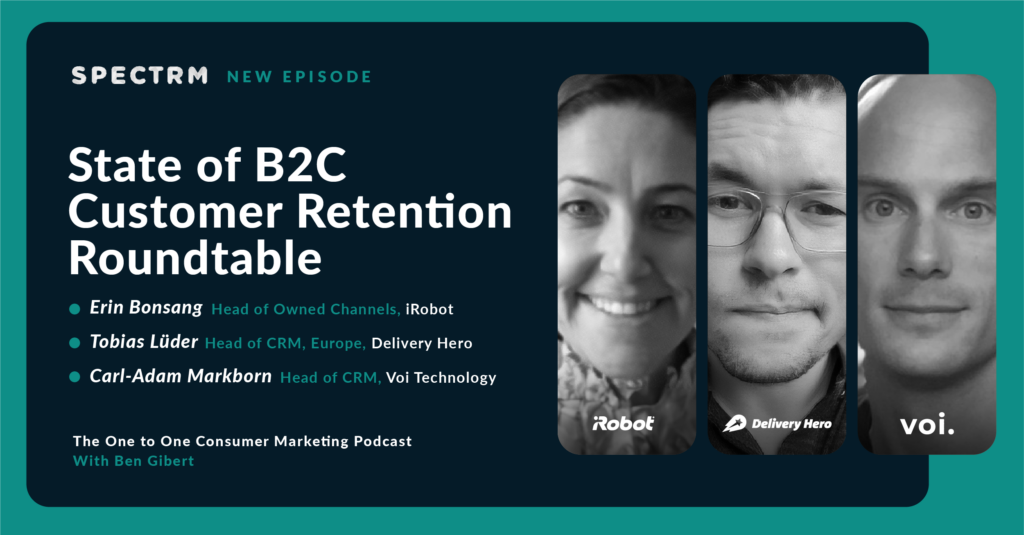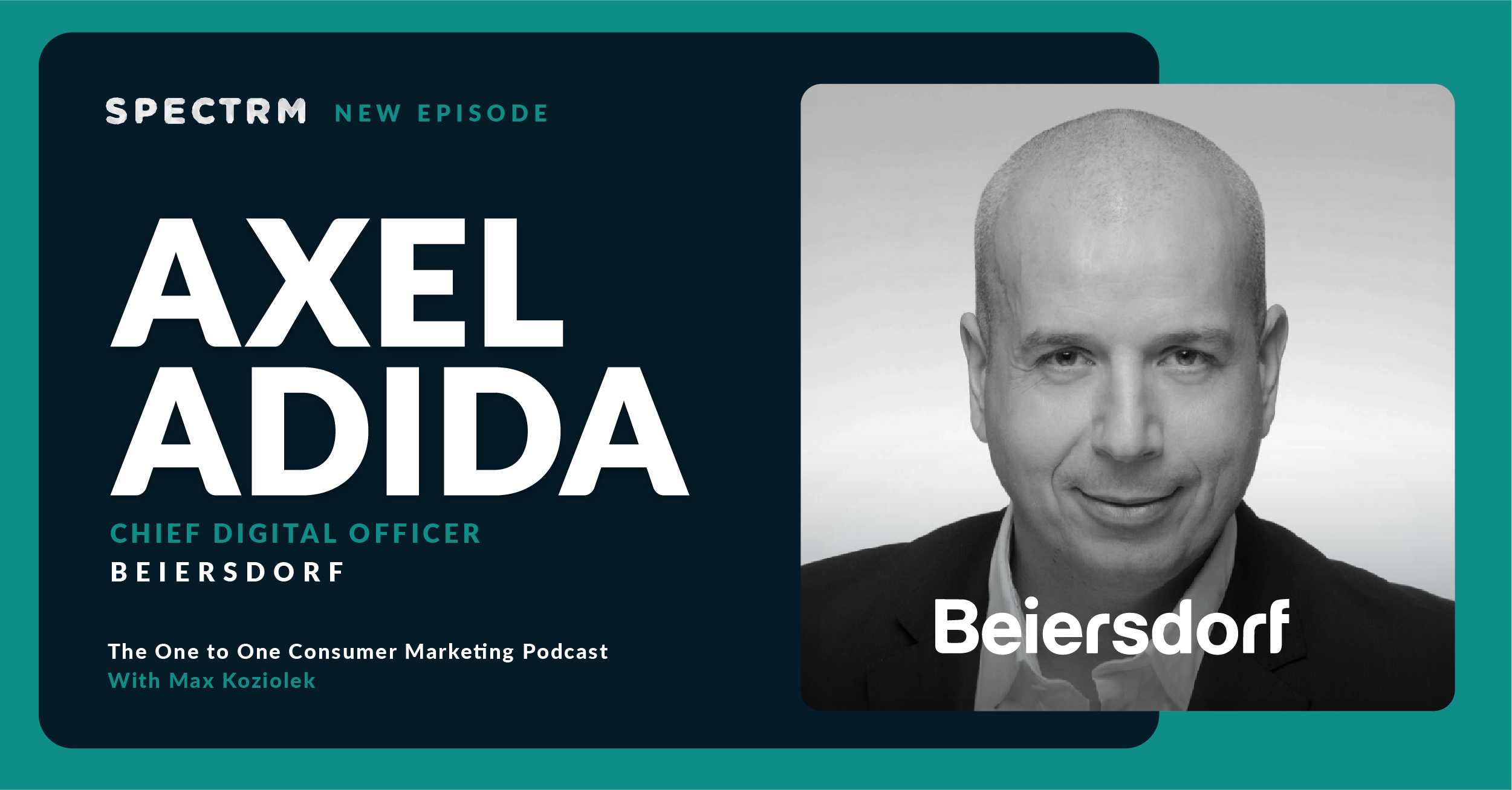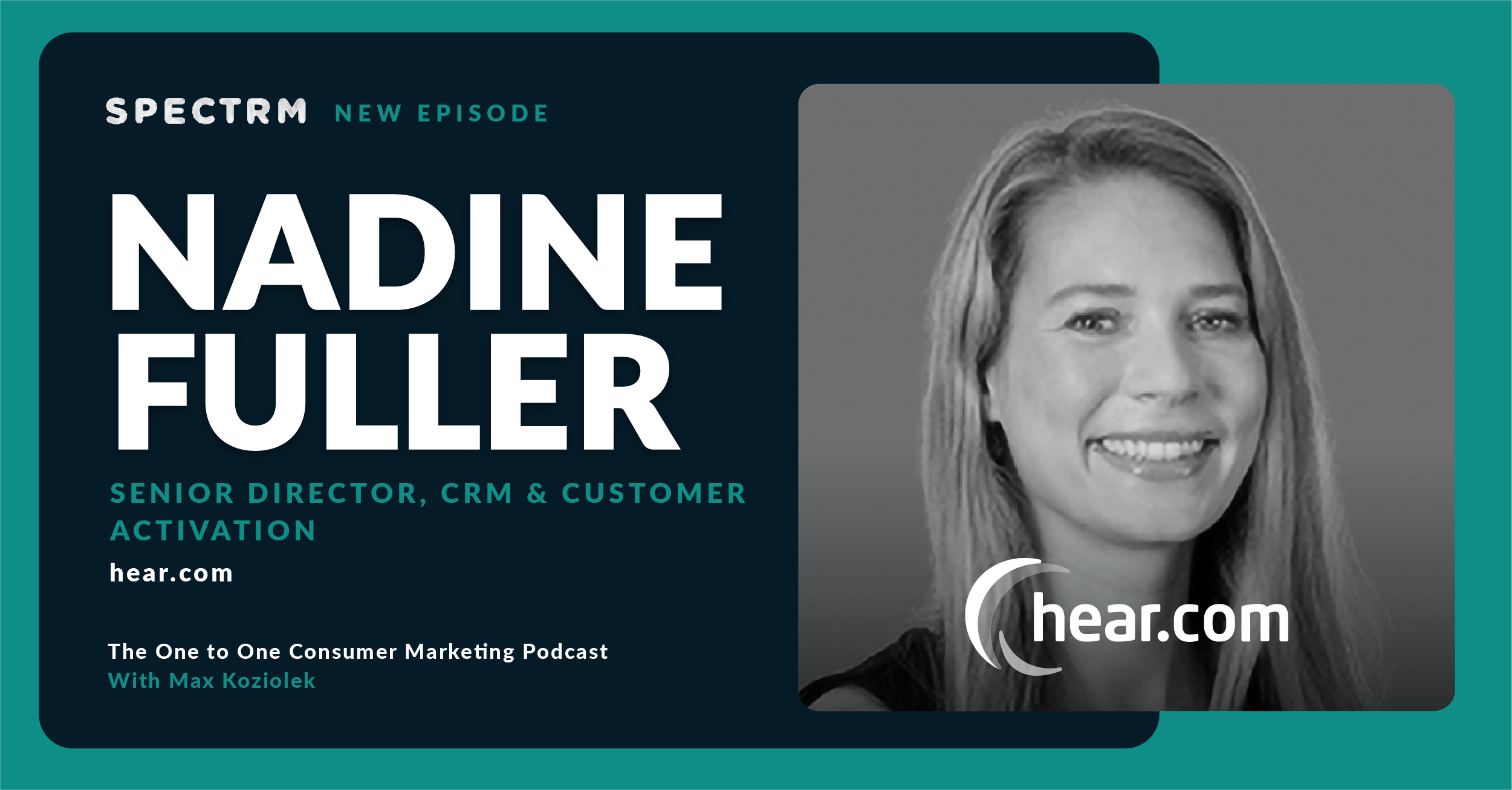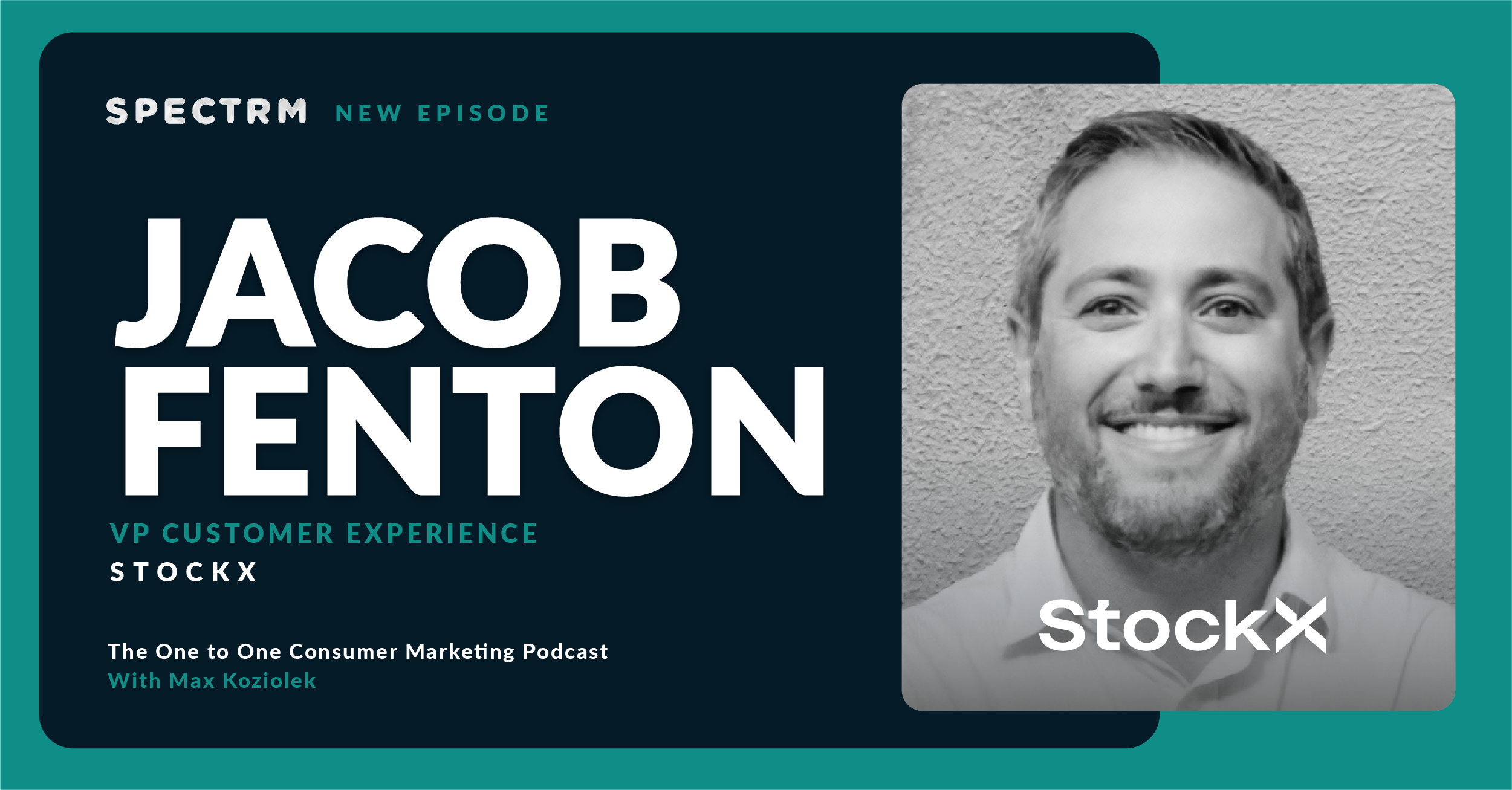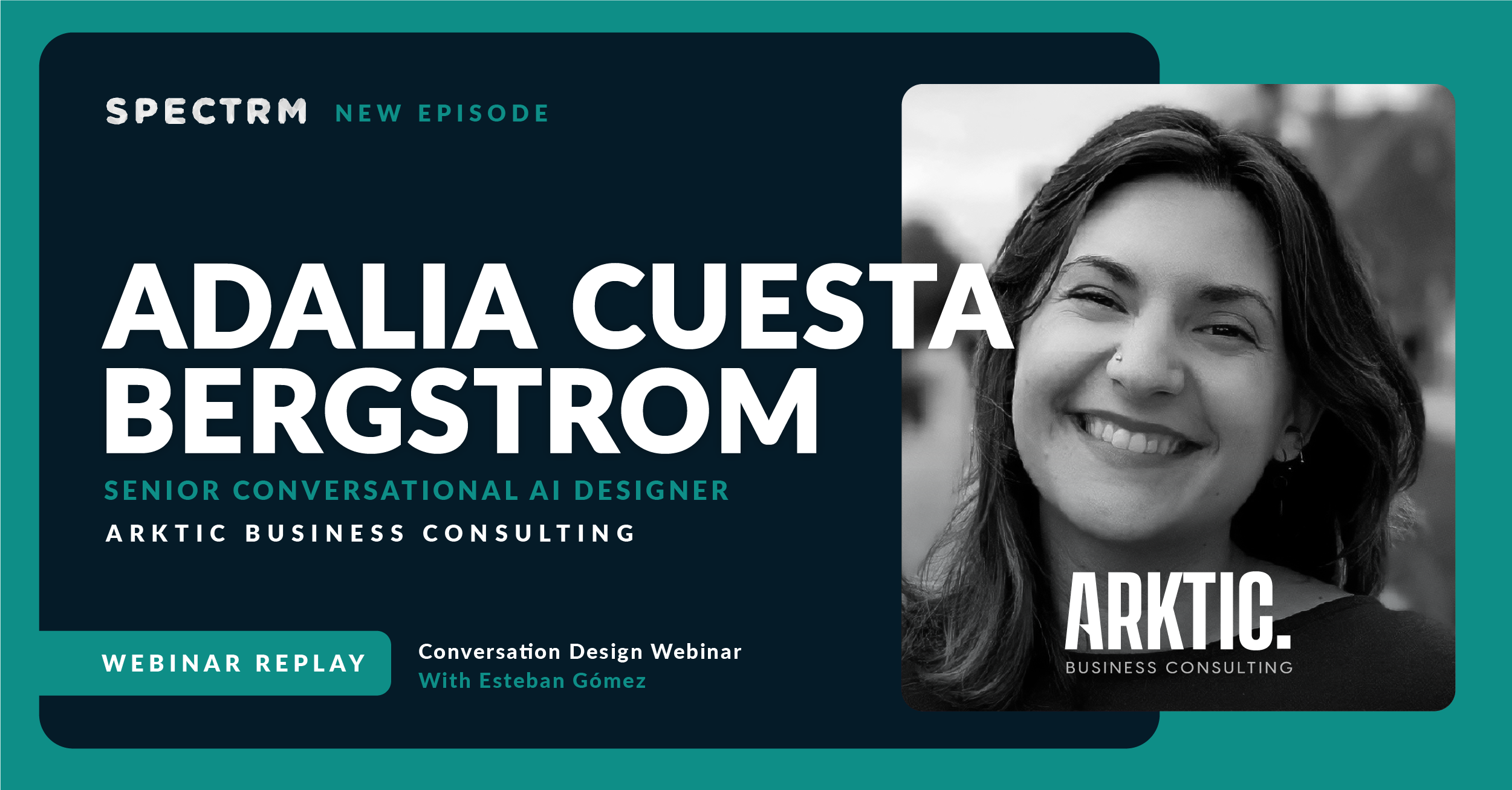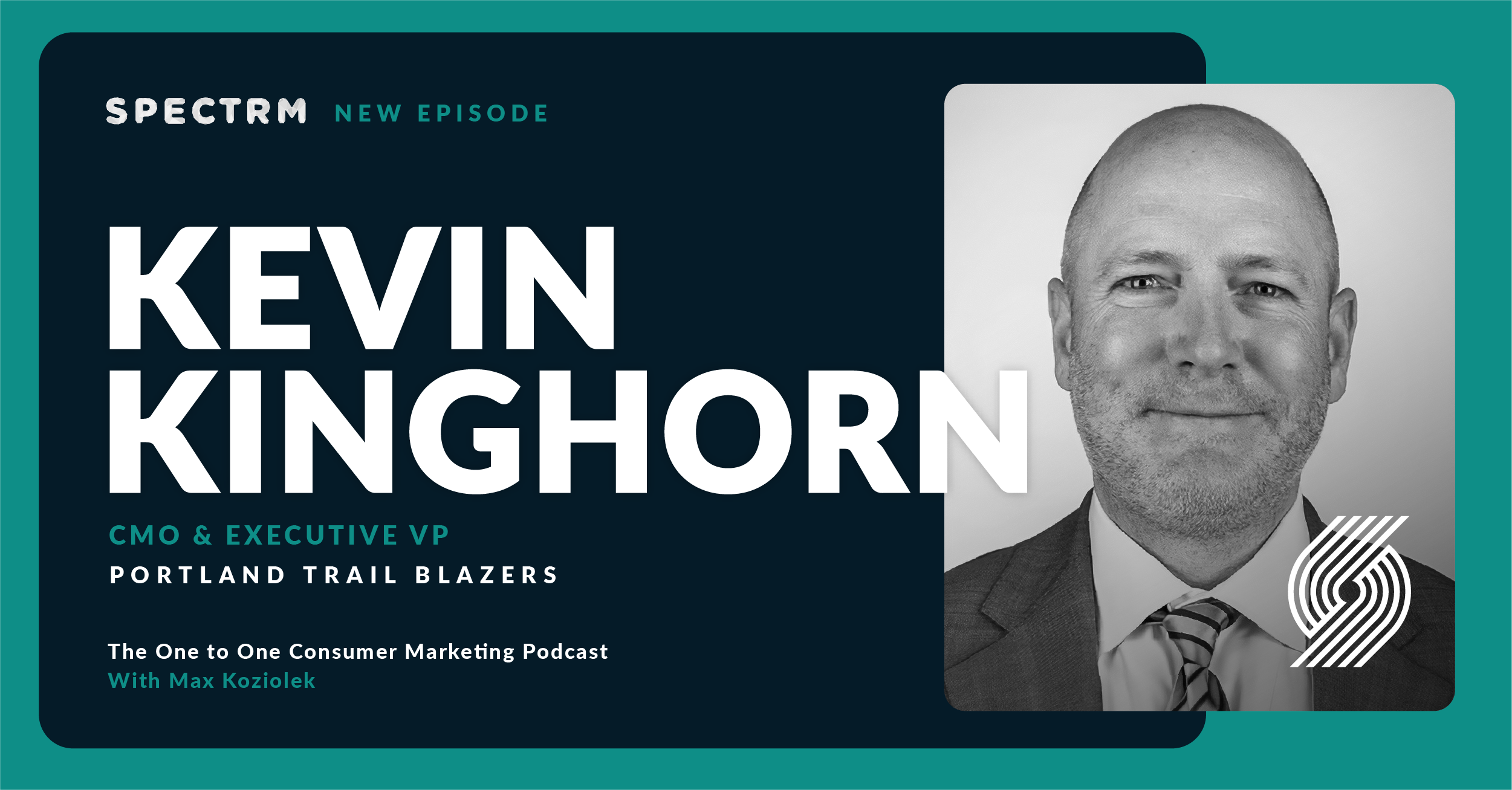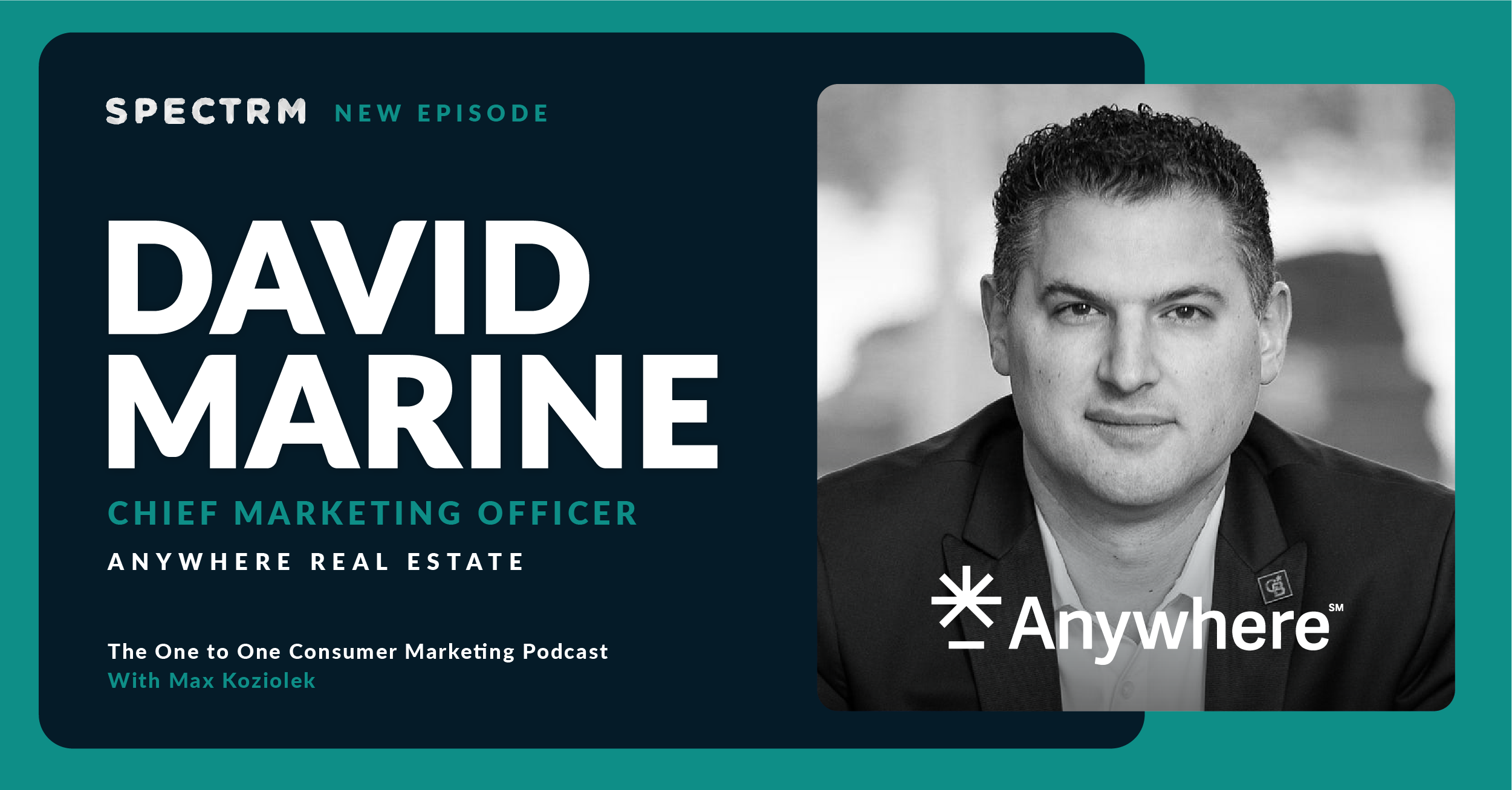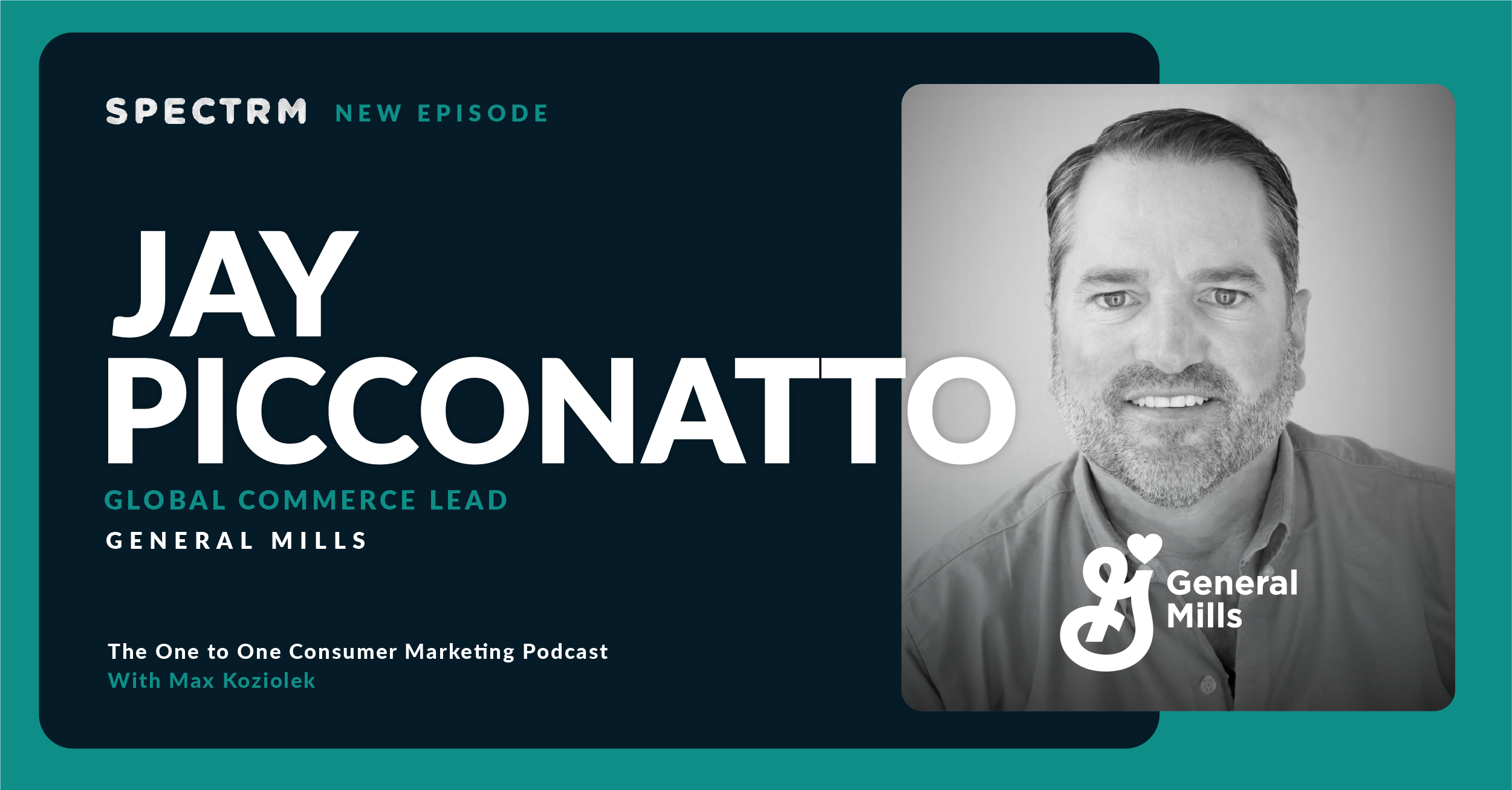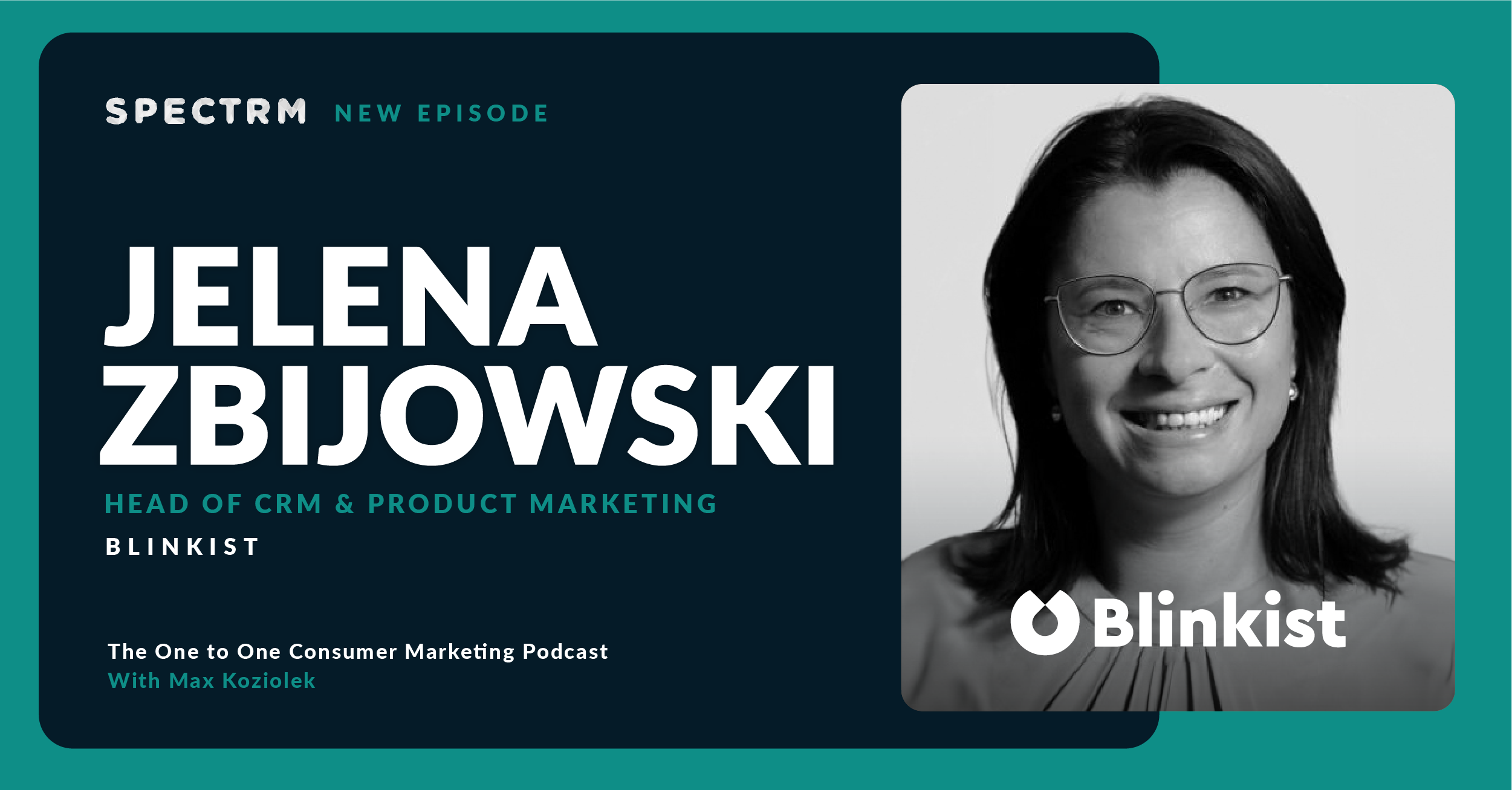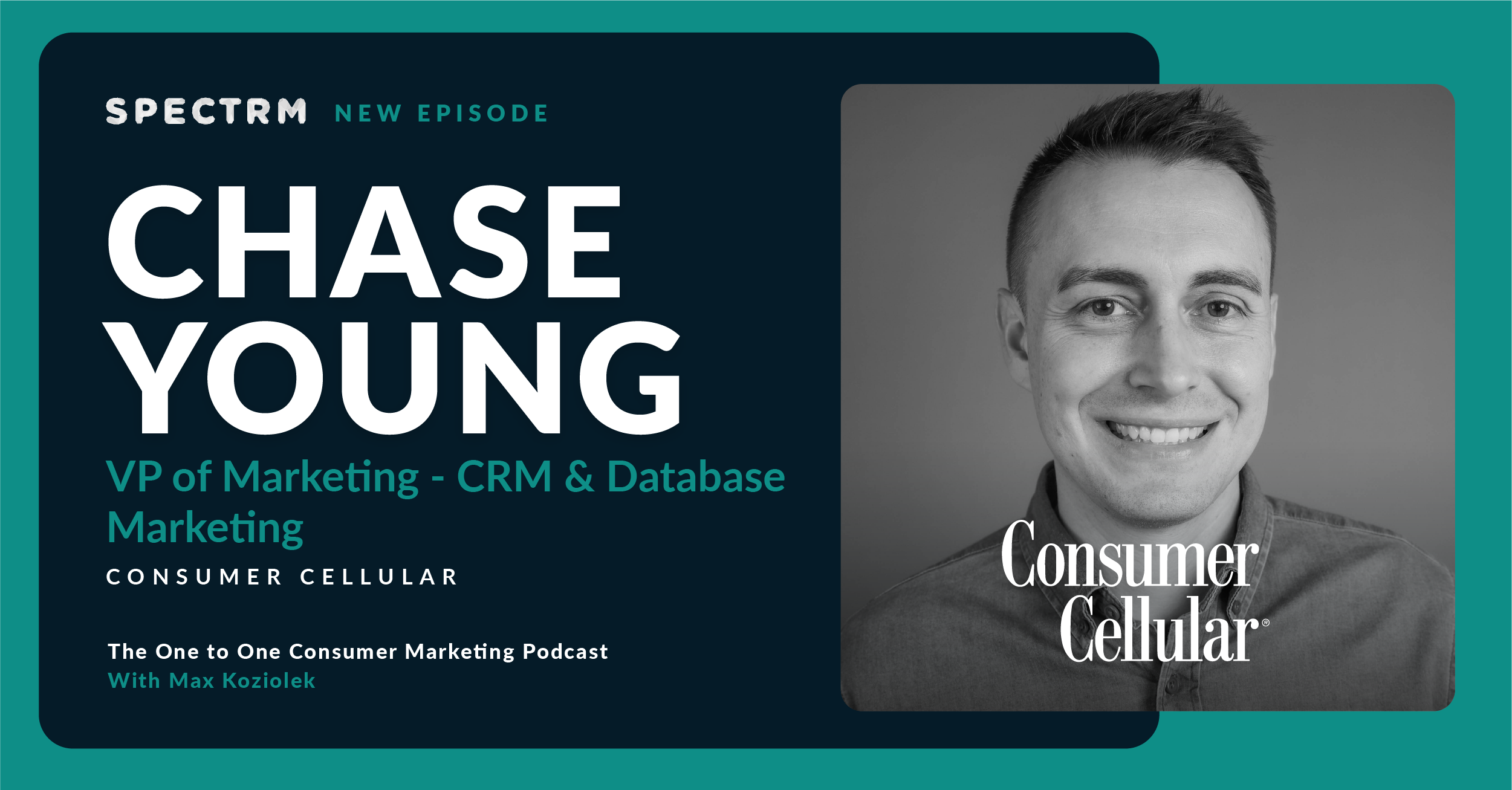Summary
In this special episode, Ben speaks with Erin Bonsang, Head of Owned Channels at iRobot, Tobias Lüder, Head of CRM, Europe at Delivery Hero, and Carl-Adam Markborn, Head of CRM at Voi Technology. Together they discuss the findings of Spectrm’s recent survey on the “State of B2C Customer Retention,” including how the focus on retention has shifted, how to measure retention success, which channels are more effective than others, the challenge of managing customer expectations, the tech tools each marketer uses, and more.
Topics discussed
- The findings of Spectrm’s recent “State of B2C Customer Retention” report.
- How the focus on customer retention has shifted in recent years, and how that’s playing out in strategies at three B2C brands.
- How different brands are measuring their retention efforts and how using a global control group helps show the impact on other segments.
- Why onboarding is the “unsung hero” of CRM, and how different brands are ensuring they’re getting messaging and tone right so they can build that customer relationship.
- What channels are seeing success, what channels are in decline, and why it’s necessary to adopt a multi-channel strategy.
- The challenge of managing customer expectations, and how messaging plays a role in helping customers better understand how to interact with the brand.
- What tech tools CRM marketers are using to facilitate retention and how these tech tools can be used to create a unified view of the customer.
- What the future of customer retention will look like, especially now that stricter data regulations will impact marketing efforts.
Having a multi-channel strategy for every campaign has been really successful. But not using every channel on every customer, but making sure that one customer gets one specific channel.
Guest Biographies



Subscribe to the podcast newsletter
Transcript
00:06
Ben Gibert
Hey everyone, and thanks for listening to and watching the one to one consumer marketing podcast. Today we have a really special episode that I’m excited to introduce where we’re going to be diving into customer retention and the recent results from our survey with three leaders in the CRM space. Really, really excited for this one. You’re in for a treat. Basically, some background Spectrm recently did a survey called The State of B2C, customer retention, where we surveyed around 300 marketers from around the world. These are professionals on the front lines of retention, kind of the ones that are shaping strategies that keep customers coming back for more. Their responses, their insights, their challenges, all try to provide a really unique view into the workings of customer retention today. So really a huge privilege to have the three of you here. We’ll be discussing some of the findings with three experts in their field.
01:00
Ben Gibert
I want to introduce Erin Bonsang, who is head of own channels at iRobot. Tobias Lüder, who is head of CRM and marketing at Delivery Hero, and Carl-Adam Markborn, who is head of CRM at Voi Technology. Erin, Tobias, Carl-Adam, thanks so much for joining us today.
01:15
Erin Bonsang
Thrilled to be here.
01:16
Tobias Lüder
Nice to meet you again.
01:18
Carl-Adam Markborn
Nice to talk to you again.
01:19
Ben Gibert
Yeah, I’m really looking forward to this conversation. Just a note for all of our listeners, all of these guests have been on previous episodes of the show. So if you want to learn more about what they’re doing, their work, the insights that they have previously shared, check out the links to their episodes in the show notes. They all had some really great things to say, but without further ado, we’re going to dive into basically the structure of the episode, which is we’re going to discuss a finding from the report. And to kick things off, the first finding is really 86% of the consumer marketers we surveyed today think that customer retention is more important than it was a year ago. So I think that’s a big finding that shows that attention is finally being paid to retention, even more so than before. So I guess my first question to you, Erin, is how has the focus on customer retention shifted over the past year and what do you think is driving the increase in importance?
02:14
Erin Bonsang
So I think it actually goes back to some basic principles that we all know here on this call, which is it’s far more cost effective to keep an existing customer happy than to buy a new one. And I think when we start to zoom back out and look at the macroeconomic factors that all of us are dealing with, it’s becoming more and more costly to acquire a prospect. Convert them all the way through your sales funnel and then keep them happy. So what we’ve started seeing is we have tailwinds amongst our existing customer install base. And so I think those macro forces have forced us to say in some channels where it’s becoming a lot more expensive to acquire, how do we do a better job at listening to consumer feedback with the goal of doing better cross sell and upsell? So it’s worth saying consumers have our products for anywhere from like three to five years.
03:01
Erin Bonsang
So it’s a decent amount of time. Consumers typically run their product anywhere from once a day to multiple times a week. Consumers offer name their products, so it sort of becomes an extension of their household. So we have a lot of work to do post purchase to keep those consumers happy and engaged. I think the shift that has happened is to say when we do that well and we really listen to consumers, we provide them with the right messages at the right time, in the right channels that work from them, we see success. And so we’re all focused on where do we have tailswinds when we also have headwinds? So I think that’s one factor. I think the other factor is consumer expectations. And you talk about this in the report, they just continue to increase. And especially when you’re a category like we are, where it’s high price point, consumers are really scrutinizing every dollar that they spend right now.
03:51
Erin Bonsang
And so we have to do slightly less selling with an existing consumer because they’re seeing the benefit of the product. So an area, for example, we’ve seen a decent amount of success is with our accessories business. So there are components with the robot that you buy in order to make sure that you get that full three to five years. And so when we can message that value proposition sometimes coupled with an offer, we’re seeing success, but that expectation and bar of what I’m going to see for that value that continues to go up. And I think the third, when you’re in a category like we are, which is highly competitive, I think there are over 60 plus brands that are playing in the RVC space. You have to look more critically and say, how do I really close that next sale? It’s going to be a lot harder with a prospect, knowing there’s so many other options out there, but it’s going to be a little bit easier with an existing customer if I can make sure that I’m personalizing those communications and I’m benefiting them in some way that a prospective customer doesn’t know about.
04:46
Erin Bonsang
So I think there’s like a macro view we’re all dealing with and then there’s category elements and then there’s specific brand and product elements for us.
04:53
Ben Gibert
Yeah, I love that breakdown and thank you for giving the three lenses through which to view that, which are both focused on kind of your business, the wider economy, as well as your customers. What about you, Toby? How is this playing out for you? Do you see a bigger shift towards retention?
05:09
Tobias Lüder
I definitely see a bigger shift and I think that I totally agree with everything that Erin said. So it just makes sense right now to invest in existing customers. But what I also see, especially my company, is it’s a higher frequency product, right? We didn’t bring food, so we have obviously lower priced points. People order more often. And I see that the management is actually getting more interested not only in reactivating customers, but rather also shifting customer behavior. So rather, for example, if people always order on the weekend, what happens if we force those customers to on a weekday? If they order lunch, for example, instead of only dinner? Can we get this habit into our customers and can we shift how our customers behave? And I think that’s super interesting. It also shows that we have the attention and that people are more interested in the details now, which I think is very interesting.
05:53
Ben Gibert
Yeah, shifting behaviors. Carl-Adam, I think that’s something that we’ve also talked about before on your episode where you mentioned how you segment customers based on their types of transport, whether they’re commuting or weekend know. Are you also seeing a big shift in getting more out of all of those different segments this year versus last year?
06:12
Carl-Adam Markborn
Yeah, I think we’re seeing a lot of change not only to people’s change behavior. It’s more like post pandemic as well. People are moving around more. People are feeling more comfortable with traveling around in Europe a lot more. We see that users that might have used our service previously just one or two cities in their country all of a sudden start using our service in a second or third country as well. So making sure that we try to give them an offer when they come to a city where we do exist, where we might have some new local competitors that they’ve never seen before, making sure that we are top of mind as soon as they start browsing between options. But also, I think what Erin mentioned as well, like macro situation as well, where we are seeing that people who we might have seen were quite indifferent to our pricing models before have become much more price sensitive.
07:06
Carl-Adam Markborn
So trying to tailor our price products more to the people who are willing to be returning customers is something that we work a lot in, especially within the CRM space where we do tailor offers that aren’t really off the shelf for normal users but are only for returning customers. So it could be different bundled strategies that we use to get people to do repeated purchases.
07:32
Ben Gibert
Yeah. Thank you for that example. I love that example. The reason I’m so happy that the three of you are here today is I think you will have very similar experiences or like the big themes are the same, but you also have very unique focuses for your product and different kind of types of products as well. So I think the insights that will come from. The conversation will be great for our listeners. The first question I asked kind of leads naturally to our next finding, which I think is why so much attention is being paid to retention now. And that was we asked people, how big is the revenue contribution of returning customers? And 59% of our survey respondents said that returning customers constitute a quarter to a half of their company’s revenue, and 29% said they’re between half and three quarters of their company’s revenue.
08:19
Ben Gibert
So I think probably no surprise to the three of you that CRM and retention is contributing such a huge portion of revenue for the companies. But I’d love to talk a little bit more about this topic. Toby, how are you currently measuring impact on revenue of your retention efforts and what kind of KPIs are you using to guide your efforts?
08:37
Tobias Lüder
So, in general, we’re looking at the incremental GMV, the fully loaded GP, and the customer lifetime value, like, how much will this customer give us in the future? So also like an outlook on the future of the customer. And in general, if you want to relate this to CRM, then I think we spoke about this in our episode as well. Then we usually rely on the global control group. So we just essentially have a set of customers that don’t receive any communication from us at all, and we test this versus the CRM communication that we have. And this gives a clear picture on how much value do we drive to the company and how much does CRM contribute to the company revenue in the end. So, yeah, I would encourage everyone to have a campaign control group, but also a global control group to measure their success of CRM.
09:18
Ben Gibert
Yeah, I love that. I remember that very well from our episode, that idea of not just the control group from the campaign, but the global group, because I think it takes a certain total buy in to the experimentation mindset that you’re going to have a segment of customers that will never receive any kind of CRM communications from you. So I think it’s a very powerful way to test around all of your cohorts and segments. Carl-Adam. What about you? How are you measuring the impact of retention?
09:43
Carl-Adam Markborn
So what we’re looking at is usually a shorter time window of activating users. We’re not trying to view on certain campaign impact on a longer time frame, but more looking like on a seven to 14 days window where we see our impact. And we also use a global control group in most of our Fshas. We’ve been having that for quite some time, actually. So we have a lot of behavioral data where we see differences in the non treated versus treated users. But the main KPI we look at is significant uplift in rides taken, really for one of those users that have received and used an offer during that seven or 14 days window. And I would say that we’ve been experimenting a lot in where do we find the sweet spot KPIs to track on because it’s not really like an ecommerce or like an average order value.
10:36
Carl-Adam Markborn
It’s just so different when you sell transportation, really. So I think that’s the best. How much revenue did we gain from those extra added rides during that one or two week period?
10:47
Ben Gibert
Yeah, it makes sense. I love also the simplicity. I’m sure the reality of tracking it and everything is very complex, but that your KPI or the main North Star is like uplift and rides is also powerful. To keep that so simple when it could go down such a complex road. Erin, what about you?
11:04
Erin Bonsang
We are a little different, I suppose. So we sell retail and direct. I’m mostly heavily involved in our direct business, so within our direct business, what we do look at is really split of new versus repeat and that gives us sudden overall goal that we’re trying to hit in terms of what percentage of our direct sales are coming from existing customers and we’re seeing a positive trend there. Beyond that, we look at very typical out of the box metrics in terms of we’re looking at things like CBR, AOB, but then we are also looking at product mix. So it’s not surprising that an existing customer, if you were within that three to five window, you’re going to skew higher on accessories versus a robot just because the price points are different. So we look at that. I think the other piece that we’ve started to look at is we look at Last click, but we also use multi touch Attribution and that’s really important because that helps us really start to better understand the effectiveness of channels within those audiences.
11:55
Erin Bonsang
If we go just based on last click, some of our channels say like an email, they don’t look as strong, but when we move to MTA, we actually find they’re working. But oftentimes what’s happening is the consumer is coming back just by typing in Irobot.com or they’re going through Google search and we’re paying for the lead that way. So we’re kind of looking at overall mix of new versus repeat, but then we’re also looking at MTA to help us understand how are the channels actually working to help us achieve and increase that overall goal.
12:24
Ben Gibert
Yeah, thank you for that overview. Back over Toby and Carl. Adam, just a question for you. Obviously you’re using control groups where I’m assuming you’re dealing with a lot of that Attribution by kind of pulling out just the control groups so you’re not getting as nitty gritty into the channels. Always when you’re looking at the higher level is kind of last click versus other Attribution models, something that you’re playing around with as well when you’re looking at your channel performance or just the overall performance of your cohorts.
12:49
Tobias Lüder
Yeah, for us it definitely is. It’s always a bit tough to measure, right? So we have different models in the past with attribution like first click but then last click and so on. But I would definitely agree that numbers look very different. Also there’s always a risk that you over attribute something to a channel, right? So for example, you send a push notification and an email like where do you attribute it to? We track two orders, for example. So it’s super tough, but it’s definitely something you have to do, otherwise you might get to the wrong conclusions afterwards. If you see that email is working then as I said, Erin, they would just type it into Google, what they usually do, right? Maybe they’re on their phone they want to buy on the desktop, right? And so makes sense.
13:27
Erin Bonsang
I’m curious. Carl, Adam, are you guys working towards a place where you want users to have a certain number of rides, say per week or per month? Or same thing with like is there a threshold? And then do you think of your customers based on certain segments, like a certain type of user, maybe a twice a week user, another maybe a five times a week and another maybe once a month. And that’s okay because everyone uses the products and services differently. Is that a way to think about is that how you’re thinking about it?
13:55
Carl-Adam Markborn
That’s a very good guess, I would say. So what we do is that from a new user we set up a goal for when we see that they have become like a repeated purchaser. We call it like five magic rides for instance, and during a shorter time frame. But then we have different segments where we try to move the user. So we have like one and dance intermediate power users and then we try to move them up the ladder really usually by having a bundled frequency of our string cells. So really trying to get people to understand the good use of the product. Like when they have taken five to ten rides the first 30 days, usually they’re sort of hooked on the product and then it’s easier to work with them in some sense rather than just focusing on national holidays offers or Black Fridays, stuff like that, but more like looking individualized.
14:54
Carl-Adam Markborn
And also what we have been doing is we’ve been working a lot in the onboarding phase with different types of predictive models like LTV, based on a number of different traits around their transactions, et cetera. We don’t really know a lot about our users in a classic way of looking at we don’t know their gender, we don’t necessarily know their names actually in some, just like we just look at all of these different markers that we have on them and their actual behavior.
15:24
Tobias Lüder
Yeah, that’s great. For us it’s pretty much the same. So for us we also treat customs differently depending on the lifecycle stage. And I would say the more active you are. We try different things. So for example, we will target you with a refer friend campaign because we would assume that you like the service and it’s likely for you to actually refer friends and then you get a discount this way. But if you for example are a journey customer, you order maybe once a month, then we can give you a voucher, for example. But we wouldn’t necessarily try a voucher first for an active customer of course and try different things like try to change the behavior. But if we have to reactivate you, we try with the easiest boundary like giving you just a voucher, just order. We are fine, you can order the same day.
16:02
Tobias Lüder
We don’t care.
16:03
Erin Bonsang
Right. And I think the always interesting thing that we probably all face is how successful you are to move people from one cohort to another versus there are some groups where they’re going to stay in that cohort but they’re going to be loyal based on that usage in that cohort and that’s good too. And understanding those differences I think is really fascinating.
16:23
Ben Gibert
Yeah, I think you hit the nail on the head there Erin, as far as really understanding what should you be looking at and what is the right measure of success for those different groups. I think the discussion you just had speaks a lot to the next question I had was also just to understand based on the revenue contribution that you have from returning customers, how are you using data and insights to better serve that audience? I think you’ve already talked to that very well, but is there anything you want to add based on that question?
16:49
Erin Bonsang
I think the only thing that I’ll add is we’re trying to do a better job at social listening voice of the Customer because the products are complex. We do have very variable consumers on platforms like Reddit, TikTok, Facebook, et cetera. And we are working to improve what are the key themes and challenges that consumers are having with the products. And oftentimes the more we can go back to those problem statements and identify a friction point, what we’re finding is it may not actually be an issue with the product, it may be around how we’re explaining a feature. So I’ll give a quick example of something that came up last week. I was talking to a partner on our commercial team. We were talking about reviews one of the products and we wanted to make them better. And so were looking at the customer themes on those customers who gave us a lower score and the issue always was that the machine kept getting stuck and so we did like a deep dive with our care team to understand like, well, was there an issue with this product and getting stuck?
17:45
Erin Bonsang
And what we discovered is the way that were instructing consumers to avoid the product getting stuck because we actually have the feature for it wasn’t comprehensive enough, and it was going over people’s heads. And so then what was happening is they weren’t leveraging the feature and then they were giving us constructive, albeit negative, feedback in the review about the overall product. So those are just some examples where it’s like, what is on the surface may not actually be what’s below. And went down one path around like, do we have a product issue? We didn’t we actually had more of a user experience issue. We’re trying to do more and more of that because the more that we can just make the experience easier for consumers, we’re seeing that loyalty. We’re also seeing that increase in terms of purchase rate.
18:28
Carl-Adam Markborn
We encounter a lot of similar issues, actually, since our product is they differ from city to city, really, based on local regulations, like parking rooms, et cetera. So it could be like, a city council have implemented a new legislation and we need totally change how the product works. And then we can see a massive drop in usage. And usually that’s like our version of getting the robot stuck. Yeah. So then we have to like, okay, instead of talking about the retention of how many rides have you taken, like identifying this specific cohort to stop riding because we had any parking rules, and seeing like, okay, let’s not just focus on the pricing is probably not the pain point here. How can we educate the user and make sure that we also, in those specific cities, add that to the onboarding as well? Yes, because people can get really frustrated, like, when you’re trying to park a scooter and it’s technically impossible for you because you have no idea that you need to park in a certain space which the city hasn’t told you.
19:32
Erin Bonsang
I think for any of our products onboarding, truly, Ben can make or break the experience because you’re trying to teach people a new behavior. And what we’ve discovered is if we don’t set people up for success out of the gate, they get frustrated. They just get frustrated. And then they either stop using the product, know they’re less likely to purchase, just it’s not meeting their that you I love the way Carl-Adam, you’re talking about onboarding because I think that’s often like an unsung hero when it comes to CRM. It’s not sexy, it’s not a cool ad, but it’s super important because you’re getting people at a time where they’re excited. Whatever the experience is, they’re excited. It’s something new and different. But if it becomes too hard, their threshold to keep going is pretty low.
20:15
Carl-Adam Markborn
I think we’ve been experimenting a lot with the onboarding there, like you said, and making sure that’s really geographically differentiated based on the local stuff. Like in Southern Europe, some of the banks, they do, like this pre off when you buy a ride in Southern Europe, they keep the money for a little bit longer than they do in northern Europe, for instance. So users can get frustrated with not getting their money back after 48 hours. It takes three or four days. But just explaining that and we’re not trying to rob you of anything because this is what’s going on here, making sure that when they know that from the beginning they don’t get as frustrated, then they feel that everything is just fine. So I think there’s a lot of things to do in onboarding that might not drive your number one KPI directly, but it will build the quality in your relationship for a long period.
21:08
Ben Gibert
Yeah, I love that you ended on that note, particularly Carl-Adam, because what I’m hearing from the three of you as you kind of talk through this is also the importance of the relationship, right? This is a long term relationship that you’re building. And so how do you nurture that also? How do you identify what the real pain is? Right? Like you said, Erin, it might not be the pain that you see on the surface, like there could be something underlying and then you tailor your strategy accordingly. That leads also a little bit into our next finding, which was that you mentioned social, Erin, as a way for mining feedback beyond just your app. We’re seeing the marketers we surveyed said that social media is actually like a top channel for customer retention and they’ve seen email decline the most. So I think this is really interesting because I know I’ve spoken to the three of you and email is obviously a workhorse for CRM, so I’d love to dig into this a little bit.
21:57
Ben Gibert
Can we start with you, Carl-Adam? Which channels have you seen decline and what do you think are some of the reasons for that downturn?
22:04
Carl-Adam Markborn
I think ML definitely has been declining the past few years, not only at Void, but in general. And I think it has a lot to do with just being overused and abused by so many different companies that it’s really hard to stand out. However, the users that do respond and engage with you on email, if you manage to isolate them and continue to use email on them, might actually be quite more successful than push notifications, because push notifications is like the new email in, overuse and abuse in some sense. People are really doing a lot of push messages and I think that what we’ve seen is having a multichannel strategy for every campaign and that has been really successful, but not using every channel on every customer, but making sure that one customer gets one specific channel. We don’t really do that much in social in regards of campaigns towards users or paid content in social but what we do is more relation building and reusing that relation building from social channels such as City Guides or smaller contents and trying to repost them in our own channels in CRM such as email or inapp messages and getting users engagement that way, rather than just basically sending a lot of discount codes which would just lower revenue in general.
23:32
Carl-Adam Markborn
And it’s too hard to segment down on users in social, really, to be honest. So trying to have that as like an emotional and bond building channel instead of reusing that in our own channels has been our success recipe so far.
23:49
Tobias Lüder
Yeah, were just talking about educational content via CRM. Right? So I think that email is like the perfect channel for that. You can always give like a step by step guide. The email stays in your inbox, right? So you can also revisit it afterwards and you can reach people that don’t even have your app. Right, so I think we also saw a decline in email, but there’s still a purpose in emails. I think the most important purpose is that you need to provide some sort of value to the customer, be it like a discount or a voucher or be it informational, being it educational about your product, addressing something that could be important for your customer. Yeah, I think in general though, that email is a bit overused. You really have to make sure that you have a good email design and maybe use sort of the newer features, right?
24:27
Tobias Lüder
Like Deal feature, for example, for Gmail, for example. So there are ways to make your email more entertaining, essentially, because I think that’s what everyone’s looking forward nowadays for entertainment. So they don’t want to see just information, they rather want to have it in a TikTok way. So make it fun, make it approachable.
24:46
Erin Bonsang
I like that. Make it fun, make it approachable. I think in terms of organic social for us, I think what we’re seeing more and more of, especially on TikTok, is consumers are now using TikTok as like an organic search engine is what I’m starting to see, and even I as a consumer am starting to use it that way. I think what we tend to see on social is sort of two ends of the Spectrm. There’s brand love and engagement with existing customers and there’s certainly activity that’s happening there in terms of an actual sales channel, based on our data, we don’t see that as much. I think it’s more of just an engagement channel, which makes sense. I think when it comes to email, I would completely echo Carl, Adam and Toby’s sentiment. Too often email is used and abused for like, we got an offer, let’s send it out, and consumers are completely aware of that.
25:32
Erin Bonsang
I think where I see everything going is multi channel but integrated. So it’s like where we see success is when app and email work together, because consumers may not go into an app every day, but they are checking their email every day. And I think Toby’s point, it’s like it’s got to benefit driven. There’s a value exchange that needs. To occur there in order for me to want to engage with that content. So I guess I would say is email on the decline for us? No, I wouldn’t say that it is, but I think there are certainly opportunities that we have to improve with email in terms of it being benefit driven and then works with other channels. So that it’s a more cohesive message.
26:12
Ben Gibert
Yes. That speaks to my follow up question then, and if I’m hearing you correctly, all three of you kind of what you’ve done is shift probably more towards orchestration, right? Towards a unified vision of your customer and interacting with them across those channels. Would that be fair to say? Toby? Is that what you’re doing?
26:30
Tobias Lüder
Yeah, pretty much. I mean you have to be where your customers are. But then on the other side I think that sometimes it’s even better to be where they don’t expect you. So one example would be, and I know in the report it didn’t got a bunch of love but a direct marketing offline marketing. I think people always think my customer base is young, they are not open to receive letters or something from our promotions. But then if you look at social media, the attention span is super short. You have like 2 seconds to actually give your message across. But then if you go to direct marketing for example, you send them a letter and they find the inbox and not many people are doing it at the moment, you actually get the attention of it because no one is doing it. They take it home and then they actually have some time to convey a message.
27:10
Tobias Lüder
So I think be where your customers are for like you have to know your customer but sometimes it’s also good to surprise them and be where they don’t expect you. That would be like my key message.
27:20
Ben Gibert
I would love your thoughts on that Erin, because I think direct mail is something that is much more widely used in the US versus in Europe. Is that something that you also have seen any success with at Irobot?
27:30
Erin Bonsang
It’s not a channel that we focused on heavily, I can tell you. It’s one that we arguing have done some testing in don’t know performance at this point. I think though what I’ve seen here in the US is a lot of D to C only brands have leaned really heavy into direct mail, benefit driven, high quality print materials and stories. I think there is a place there for sure, but I think it goes back to what Toby said which is like entertain me, give me a value exchange, make it interesting. I think for myself, the brands that I’m seeing doing really well in email, they’re just taking a known topic but they’re putting kind of their spin on it. And the spin could be as simple as tone. I think tone can go such a long way. If brands can sound more like people. They just seem more human.
28:14
Erin Bonsang
And brands that are able to do that and do that well make their experiences more memorable. It’s not always that you have to have some huge creative execution. It’s more around. How do you make it feel authentic to what you’re doing?
28:26
Ben Gibert
Yeah. And as you kind of navigate how to be more authentic, like, which channel to reach your customers on right. Like, the right moment to engage them. What are some of the biggest challenges that you’re coming across right now?
28:38
Erin Bonsang
I think time and place matters. So I think about onboarding. Onboarding is not the place to make jokes, be funny. Like, people want to figure out how to use the product. So it’s very educational. It’s very direct. It’s very, like, let’s get you set up and moved on, but if we want to talk to you about your robot’s birthday, there, we can have some fun. So I think it’s just finding those times and places, and it really needs to be based on what is the mindset of a user as they’re making this purchase pre, during and post and then aligning the comms to it.
29:10
Ben Gibert
Yeah. Carl-Adam, that reminds me of our conversation in the episode where you talked about the vehicle itself being your primary acquisition channel and then having a very educational approach to Onboarding. Would you echo what Erin said in terms of Onboarding being a very kind of education focused touch point?
29:27
Carl-Adam Markborn
Yeah, definitely. I mean, we as a company also have a responsibility in the cities where we operate that we have vehicles out in the street that people know how to use them and they follow the rules in each specific city. But I really think what Erin was talking about in regards of Tonality and Tonal voice with the user is that there is a certain time to be funny and there is a certain time to be serious, et cetera. And I think that we’ve been working a lot with finding and identifying data points where users get hiccups or they have issues with our products. We might never really know exactly what has happened to them, but we know that they only took a ride that lasted for 75 seconds. Okay, that is a marker that something has happened. Can we see which was the average speed there?
30:18
Carl-Adam Markborn
Okay, we probably have some idea here.
30:21
Tobias Lüder
Okay, then.
30:22
Carl-Adam Markborn
Now we can start to automate things based on this and use CRM as a channel to send them a push notification if the app isn’t open and say, hey, we apologize for your hiccup. Here, take a ride, but next week it’s on us. For instance, like those types of there, you can be funny and you can talk about it in a semi funny way, but it could also be that something has happened to them. They hit the curb side and they fell over or something. So they have be really careful with tone of voice, not to joke about things too much, really, while being perceived as a friend as well.
30:57
Tobias Lüder
I think for this topic, there are some apps, I’m not sure if you know it, but carrot Weather, for example, where you can actually change the tone that you want to be taught with. So it’s like a weather app. It essentially just shows you the weather, but you can change the tonality that you put. So I think it’s also quite fun. It’s only eat apps, so they’re not sending cushionifications or emails, but it’s quite interesting. I think there could be something for the future that you can choose. How should this app talk to me?
31:23
Erin Bonsang
Maybe that’s really neat.
31:25
Ben Gibert
Yeah.
31:25
Carl-Adam Markborn
So the consumer really next step. Before you could only opt out of comms. Now you can in a lot of ways opt down, but then tonality as well would be amazing.
31:36
Ben Gibert
Yeah, I love that example and I agree. Carl-Adam, it must be you probably have to be even more careful than Erin to some extent, because Erin’s robot might bump into someone’s couch, but if someone bumps into someone else on the road, it’s a very different kind of situation. I think everything that we’re speaking about right now speaks a lot about customer expectations, right. How do they think about interacting with brands, how do they want to interact with brands? And a finding in the report was that 63% of retention marketers say it’s a major challenge to manage all of those customer expectations. What is creating the biggest challenges for you? And has that changed over time? What about you, Erin? Let’s start with you.
32:20
Erin Bonsang
I think the biggest challenge for us that has and probably will continue to be is it’s a robot. So when people are purchasing a robot, there are inherent expectations that a robot is going to be able to do this better than a human. And a lot of it then comes down to it’s a high price point product, it’s one you use frequently is a robot. But it does need guidance. And so managing those expectations, we do have some consumers, I think they think, oh, I bought a robot and I’m done. I’m never going to have to do anything. And so part of I think the opportunity is it is a slightly different mental model to think about using one of our products versus a broom or a traditional upright vacuum. The way that you use the product and set the product up is really different and the products really do get smarter over time and customized to your house, but they need some guidance in the upfront.
33:10
Erin Bonsang
And some of what we’ve tried to manage is if you go into it thinking, I’m going to buy this product, I’m not going to need touch it, I don’t have to worry about it’s a robot, and my floors will never need to be touched ever again. And I will never need to have any engagement. There’s going to be levels of a mismatch. So some of it is that’s why the onboarding is so important. We need to teach you new habits on how to think about cleaning your floors that you’ve never had before, ever, and get you into a new habit. And it takes 30 days to form a habit. So I think that’s where we find, like, we don’t nail that correctly in the first 30 days. Our ability to generate LTV is a lot harder because there’s just a mismatch in what I thought a robot could do versus a human versus the robot can do those things, but it needs to be taught over time with some guidance from you.
33:56
Ben Gibert
Yeah. Is that something that you’re also seeing, Toby? Obviously you’re not teaching people how to use the robots necessarily, but maybe that mismatch between expectations and reality or the journey that they have to go on to really start using your product and growing revenue for you.
34:10
Tobias Lüder
Yeah, definitely. We definitely see that people have really high expectation when it comes to their food delivery. Right. Like the food should be at the best quantity. It should arrive more or less immediately because people are hungry. So expectations are really high and the only thing that you can really do is it’s a big challenge. And it’s usually out of our hands because we are depending on the restaurant partners, for example. So we have limited control over those. But what we can obviously do is we can educate people can when is food going to arrive? And we have an order tracking page, of course, from Product, but we also try to support this with push notifications and tell them, hey, Nick, it’s not that long until you’re going to get your food and try to be as accurate as possible and giving as much context as possible.
34:48
Tobias Lüder
So, for example, if the order got declined, then we try to give you a reason why it got declined because maybe there’s too much traffic, maybe there was an accident. So there are many reasons. Usually it helps if you can give a bit of context instead of just saying, yeah, your order got canceled because that doesn’t really help anyone.
35:04
Ben Gibert
Yeah. Would it be fair to say that there’s also, as you are kind of building that relationship with the customer, it’s like what they might value the most is transparent communication and very direct communication with them versus just always expecting the best. Are we shifting from a state where brands have to be more direct and honest with their customers just because of how high expectations are? How does that play out for you, Carl?
35:26
Carl-Adam Markborn
Adam I feel that we have gotten a lot of media scrutiny on our business all over Europe, which has forced us to be very transparent to all our users in regards to everything, how we operate, our core business in our warehouses, how we charge our vehicles, how we recycle batteries, et cetera. And having all of that information easily available for users in their onboarding, but also during their lifetime with us, really is kind of crucial because there are so many different factors that we have absolutely no idea about that users do put a lot of emphasis on for their own usage of our product. But I think what we faced a few years back was that basically we had like one standard product and then we moved into a new city. Okay, we tweak it a little bit, but then all the tweaks that we do are like back end stuff that the user will never see.
36:25
Carl-Adam Markborn
But then for us, working with CRM is that we’re going to convey this message to every user in all specific cities. And we have almost 80 cities with different rules and regulations. When the microbial started, it was kind of like plain vanilla. Everybody had the same rules, I e. No rules. But now we have so many different rules, regulations, and there’s so many different flavors of potential issues with the users. For instance, in the United Kingdom, they have a much higher demand from the government to scan and upload your driver’s license just to ride a scooter, for instance. Now we need to be super transparent with user from the first beginning when they start using that. Otherwise they get super disappointed because they didn’t bring their wallet with the driver’s license, et cetera. So just trying to navigate, finding all the bottlenecks for the user, making sure, like, okay, trying to test them as well.
37:17
Carl-Adam Markborn
It doesn’t have to be extremely large group tests, but just seeing that, okay, we know that in this specific city in the UK, we do have an issue with this certain problem, and then we’re just trying to be very transparent with that from the beginning with new users. And usually what we see is that we do get an uplift in rides taken by being very transparent.
37:38
Ben Gibert
Yeah. Thank you for sharing those specific examples. Erin, did you have something to add?
37:42
Erin Bonsang
I would echo everything Carl-Adams said. I think the only additional piece I would have is, don’t underestimate the importance of empathy. We all have products that they go wrong from one time to another. The difference from that being a negative perception of the brand is feeling like you have a partner in the company to help you when you run into those issues. I remember about a year ago, I had an issue with my iPhone, and I had interacted with Apple in every single channel. I’d done chat, I went into the store, I did email via phones. And every person that I interacted with, the first thing he said was, I’m sorry this is happening to you. This is so frustrating. I’m going to try to do whatever I can to make it better. And just those three sentences they deescalated things so quickly. And I think the importance of empathy and just recognizing that consumers don’t want friction in their experience, you don’t want them to have friction in their experience, you might not have answer.
38:36
Erin Bonsang
And to Carl-Adams’point, there are some things that are just out of your control, but the more that the user feels like you’re their partner and you’re going to try to do the best that you can to figure it out, that goes such a long way. And I think when we’ve been able to turn a negative into a positive through certainly solutions driven and empathy that increases LTV, because what the customer remembers was like, yeah, I was pretty angry, I had a problem, but they listened to me and they helped me figure it out. They feel human now. They don’t feel like a corporation. They feel like they’re people like me and they want to help me figure out this problem. I now have an ally that’s so important.
39:11
Ben Gibert
Yeah, I agree. I think that speaks, again to really the fact that you’re all in the business of building relationships, right? And empathy is a key part of building relationships and transparency is a key part of doing that well. So I think shifting to that mindset of, okay, a pain is not always a massive problem. It can be an opportunity to actually build a relationship to it is a very good way to look at it. Maybe shifting away from the customer side more towards the back end, the gritty day to day of what you’re doing in CRM and all that relationship building. One of the findings from our survey was that 90% of marketers say their retention technology is generating a positive ROI and 65% of them are using between six and 15 tools. And their retention technology stack. So I think it’s a place that has a lot of tech, a lot of integrations, but where people are seeing a lot of value.
40:02
Ben Gibert
Starting with you, Toby, can you maybe share some of the tools or technologies that you’ve seen be the most impactful in customer retention? I’m calling on you also because I remember you saying you did 17 CRM migrations and I’m still scared just remembering that. Yeah.
40:16
Tobias Lüder
So first of all, I’m not really surprised by the findings. Right. I think that if 90% say that they have a positive ROI, I think it’s always good to invest into retention. I think it’s always going to pay out in the end. Between six and 15 tools is quite a lot. CRM at mostly work with Brace as a partner.
40:34
Carl-Adam Markborn
We do all the orchestration via Brace.
40:36
Tobias Lüder
And then use tableau, obviously, for insights. Looker, if you want to do something quick and dirty. And most of the time, though, we rely our big data science team so they figure out everything that we need. And if we have a specific question, then they’re going to have it answer for us. This might not be a big chance for smaller companies, right. They might rely on a tool that makes it easy and maybe makes it a bit more visual and so on. So I would say that this is one of the benefits of working in a large corporation where you just have big teams. They can provide a lot of data without using a tool. Right, because I think many tools nowadays they have cool reorder probability scores for example. But if you can build it in house, it’s always going to be a bit more accurate than what the tool is going to provide you.
41:18
Tobias Lüder
So I think it depends on the.
41:19
Carl-Adam Markborn
Options you have, essentially.
41:21
Ben Gibert
Yeah. What about you Carl-Adam, I know you’ve mentioned working with Probabilistic models before. What does your tech stack look like and do you have teams that do some of the work as well?
41:29
Carl-Adam Markborn
I think we’re kind of similar Toby actually. We work with Braids for all our orchestration. We review and analyze everything in tableau and then for quick and dirty stuff we use Metabase. We also leverage an add on product from Brace which is a direct integration to our Snowflake data warehouse which we are using to run a lot of data science models on. But we have a very strong data science team with really good data analysts that are helping us a lot with the models building but also analyzing things that are a bit more out of the box than what you might get from the normal marketing automation suppliers. And I think most of the things that they have been supporting us with, I don’t think that it might be so easy for a smaller company to do that from day one. But I think if you start to look at the different data points you have on the users in your data warehouse and those bespoke models are going to be way much more efficient than running the things that are the base package you might get from a supplier.
42:42
Ben Gibert
Yeah. And what about you Erin, would you echo that or do you have a smaller tech stack than the finding.
42:50
Erin Bonsang
Mean? We are a big partner with salesforce so a lot of our marketing and sales run through their ecosystem. So I think we leverage a lot of their clouds and it’s probably a little bit more simplistic. We definitely don’t have that many tools. That being said, I think what I’m still yearning for and it’s like something we all want is truly a unified view of our customer and that’s something that I think we’re still not quite there yet. So certainly that’s something that I yearn for. I think when I saw this question, the biggest thing that came up to mind for me is in conversations that I’ve had with marketers around technology and I at certain points been guilty of this is like what problem is the technology solving? Because too often I hear like, I need this technology because of this. And often I’m like, yeah, but what’s the strategy around that technology?
43:39
Erin Bonsang
Don’t buy a tool in lieu of a strategy because you’re still going to have the same problem. And there are so many providers out there that are basically saying, like, we’re going to help you with your strategy if you just buy this tool. And by and large, what I’ve seen is like, that’s just not true. So I think you got to always go back to what problem is it solving for? How does it play back to the overall strategy, and then make sure the features that a lot of companies market in these tools that sound so sexy at the outset, oftentimes you don’t use them. So it’s like really weighing, like, what do I need to run my business? Where are the areas that I can improve? And then there’s all these shiny new toys that sound awesome, but they might not apply to your business.
44:20
Erin Bonsang
And just keep that in mind as you’re making decisions.
44:23
Ben Gibert
Yeah, absolutely. I think it’s very easy to buy into the fact that the tool is going to solve everything without doing the harder work of the marketing fundamentals that underlie the tool. Yeah, it’s definitely with the proliferation of technology, that will get harder, not necessarily easier for marketers. And I think that leads to our final question. I know we’re running low on time and I really appreciate the three of you being here so we can keep this one short, but what is the future of customer retention for you in the endeavor?
44:52
Tobias Lüder
I think we’re going to get access to more channels. I think that are talking about social media, for example. I think that’s definitely a channel in the future that we will leverage more in CRM. Then I think there’s going to be stricter data protection. So we’re going to rely more on CRM at performance marketing, more on first party data. And then I think that CRM is going to move closer to product. And I think that CRM engineers also need to be aware of what’s happening in the product and orchestrate the CRM communication based on what people see anyways in the app. Then I think that we’re going to get more budget in the future. So I think that the shift towards retention is going to be even higher in the future, hopefully. And then maybe one statement to AI, because everyone’s a bit afraid of AI taking everyone’s job.
45:35
Tobias Lüder
So I don’t think AI is going to replace your ad managers, but rather it’s going to change the way they work. So I think that’s going to be a big change in the work environment.
45:44
Ben Gibert
Yeah, all very good points. Is there anything that you would want to add to that, Carl?
45:48
Carl-Adam Markborn
Adam I think that the issues that we’re going to see with more and more regulations on user data is going to impact our work a lot more. There’s things that we can do right now that might not be accessible for us as well as CRM marketers like sharing first party data with social media networks unless we have different type of specific add ons, opt ins, et cetera. But I think moving away from the traditional channels where you do one to many communications and tapping into one to one communications with users, using the channels where they are and where they are comfortable being communicated to and giving them the opportunity to setting the frequency and the pace and the topic on everything. An example would be a company like ourselves. We communicate to our user, not by a push necessarily, but through Snapchat where they have all their ongoing friends and we have committed to not send them more than three messages per month and they only want to receive promotions or things that would impact our service.
46:56
Tobias Lüder
For instance. I think that would be more of.
46:59
Carl-Adam Markborn
A future where a company you want to be communicated with, just non news company.
47:07
Erin Bonsang
I think I would plus one to what Toby and Carl-Adam are saying. The only other two things I’ll add is like omnichannel will become a table stake. It’s kind of already is, but not everyone’s doing it. And then I think the other element is people just want to be entertained so that brands that can do a good job at truly like surprise and delight, but more just poor entertaining and treat brands as personalities will win.
47:30
Ben Gibert
Yeah, I love that vision. I think you’ve all mentioned it before as well, but kind of zero and first party data, that’s really the core of what you’re doing in CRM as well and building the relationship with your customers, managing the opt ins. It might change, like Toby said, the AI might change how we do the type of work we do, but it’s not going to change the marketing fundamentals of what we do or how we build relationships. So I think there is a very bright future for all three of you and the work that you’re doing and I really appreciate you taking some time out of your day to come talk to us here at Spectrm on the podcast to review the findings from our report. That’s really all we have time for today, but again, really thank you so much for your insights.
48:13
Ben Gibert
I want to remind everyone to download a full copy of the Spectrm State of B2C Customer Retention report. We’ll link it in the show notes. But before we sign off, just huge thank you to all of you. If our audience wants to get in touch, where should they go? Erin, can you send the best place for our listeners to get in touch with you?
48:30
Erin Bonsang
Sure. LinkedIn.
48:31
Ben Gibert
Okay, would that be the same for all three of assuming?
48:34
Carl-Adam Markborn
Right, so LinkedIn.
48:37
Erin Bonsang
Okay.
48:38
Ben Gibert
Okay, thank you all three of you and I hope you have a great rest of your day.
48:42
Erin Bonsang
Take care.
48:43
Ben Gibert
Thank you, everyone. Bye.
